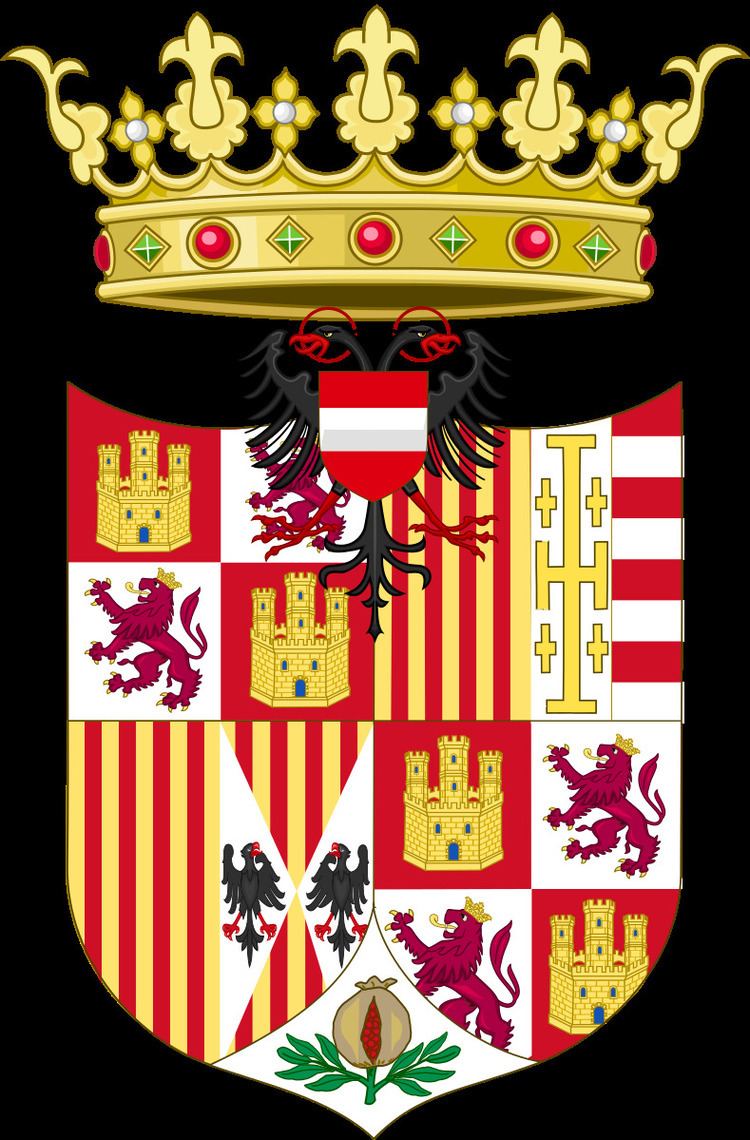 | ||
The Spanish monarchs of the House of Habsburg and Philip V used separate versions of their royal arms as sovereigns of the Kingdom of Naples-Sicily, Sardinia and the Duchy of Milan with the arms of these territories.
Introduction
The Kingdom of Sicily was ruled as an independent kingdom by relatives or cadet branch of the house of Aragon until 1409 and thence as part of the Crown of Aragon.The Kingdom of Naples was ruled by the Angevin ruler René of Anjou until the two thrones were reunited by Alfonso V of Aragon, after the successful siege of Naples and the defeat of René on June 6, 1443. Eventually, Alfonso of Aragon divided the two kingdoms during his rule. He gave the rule of Naples to his illegitimate son Ferdinand I of Naples, who ruled from 1458 to 1494, and Aragon and Sicily to Alfonso's brother John II of Aragon. Eventually the Kingdom of Naples was reunited with the Aragonese Kingdom.The titles were held by the Aragonese kings of the Aragonese Crown until 1516, followed by the Kings of Spain until the end of the Spanish branch of the House of Habsburg in 1700.
When Francesco II Sforza, duke of Milan died without heirs in 1535, emperor Charles V got the Duchy. The Emperor held the Duchy throughout, eventually investing it on his son prince Philip. The possession of the Duchy by Spain was finally recognized by the French in the Treaty of Cateau-Cambrésis in 1559.
The Kingdom of Naples-Sicily and the Duchy of Milan remained in Spanish hands until the War of the Spanish Succession in the early 18th century, when Milan was conquered by the Austrians and Naples-Sicily passed to the House of Savoy.
